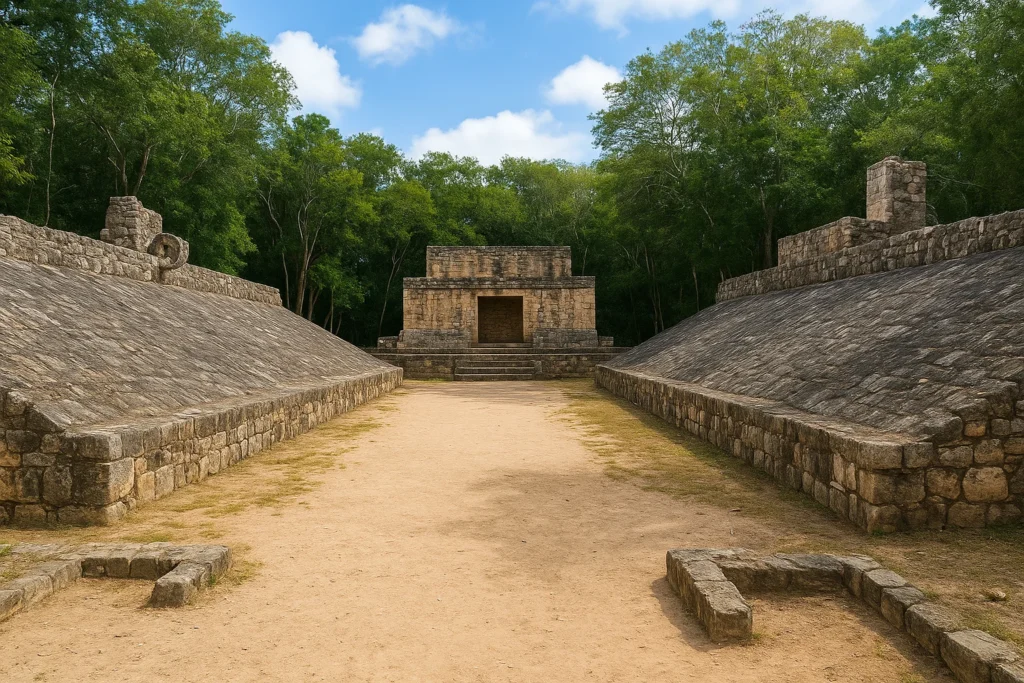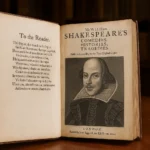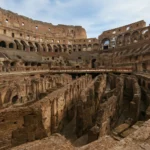A Discovery That Rewrites History
The dense, enigmatic jungles of Mexico’s Yucatán Peninsula have long served as a silent guardian of the ancient Maya civilization. Beneath the vibrant green canopy, where the calls of howler monkeys echo through the air and colorful toucans flit between branches, a discovery of profound importance has shaken the foundations of our understanding. A dedicated team from Mexico’s National Institute of Anthropology and History (INAH) has unearthed a remarkably well-preserved ball court in the ancient city of Yaxnohcah. This find is not merely an architectural ruin; it is a meticulously preserved time capsule, dating back over 2,000 years to the Late Preclassic period (300 BC – 250 AD).
This isn’t just another archaeological site; it is a “Rosetta Stone” for understanding the spiritual dimension of the Maya. The exceptional preservation of the site has allowed researchers to examine elements rarely found intact, from the original plaster flooring and architectural details to ritual artifacts and organic remains that have lain undisturbed for two millennia. Dr. María Rodríguez, the lead archaeologist on the project, describes the find as a “key that unlocks a new chapter in Maya history,” revealing how this sophisticated culture seamlessly blended sport, religion, and politics into a single, awe-inspiring sacred tradition. The discovery includes not only the physical structure of the court but also compelling evidence of ceremonial practices, including the use of psychoactive plants, which profoundly challenge previous assumptions about the ballgame’s origins and its significance to the Maya worldview.
Chapter 1: The Yaxnohcah Ball Court—An Architectural and Spiritual Masterpiece
The Physical Structure: A Testament to Ancient Engineering
The newly discovered ball court at Yaxnohcah is a masterpiece of ancient engineering and symbolic design. It measures approximately 25 meters in length, with two parallel stone walls rising 3 meters high. Unlike the later, more monumental courts found at sites like Chichén Itzá, this early example showcases a sophisticated and elegant architectural style perfectly adapted to its jungle environment.
- Sloping Walls: The walls are constructed from precisely cut limestone blocks, creating a smooth, angled surface that was integral to the game’s mechanics.
- Original Plaster Surfacing: In many areas, the original lime plaster surfacing remains remarkably intact. The surface was not just functional but also ceremonial, often polished to a sheen.
- Stone Markers: Intricately carved stone markers, embedded in the playing alley, likely marked key points on the field or commemorated significant events.
- Acoustic Properties: The court’s design creates unique acoustic properties that amplify sounds, turning the rhythmic thud of the ball and the chants of the crowd into a resonant, almost hypnotic, experience.
Construction and Celestial Alignment
Perhaps most astonishingly, the court’s orientation is not random. Its long axis points directly toward the rising sun during the spring equinox. This profound alignment suggests that the Maya were already incorporating sophisticated astronomical knowledge into their architecture centuries before the construction of more famous structures like El Castillo. The court was not just a playing field; it was a cosmic clock and a celestial compass.
Excavations have also revealed fascinating details about the Maya’s construction techniques:
- Foundation Preparation: The process began with meticulous ground leveling, followed by the creation of a stable base using layers of compacted soil and small stones, a technique that ensured the structure’s longevity.
- Wall Construction: The sloping walls were built using a durable core of rubble, which was then faced with the carefully shaped limestone blocks we see today.
- Surface Finishing: Multiple layers of fine lime plaster were applied to create the smooth playing surface, with the final coat polished to a high sheen, much like a modern floor.
- Decorative Elements: While most of the decoration has faded, traces of red pigment suggest the walls were once painted with vibrant colors, adding to the spectacle.
Chapter 2: Pitz—More Than a Sport, a Sacred Performance
Reconstructing the Game: A Dance of Power and Skill
While the ancient Maya left no written rulebook, archaeologists have meticulously reconstructed the likely gameplay based on reliefs, artifacts, and comparative studies.
- Team Composition: Evidence suggests that teams varied in size, typically consisting of 2 to 7 players on each side.
- Ball Dynamics: The solid rubber ball, weighing between 3 and 4 kilograms, was a formidable object, capable of reaching speeds over 60 km/h. Players used their hips, elbows, and knees to strike it, turning their bodies into human paddles.
- Protective Gear: To endure the brutal impacts, players wore padded belts, knee guards, and sometimes a stone “yoke” around their waist to amplify the force of their strikes.
- Scoring System: Points were awarded for various achievements, but the most coveted goal was to pass the ball through one of the vertical stone rings high on the walls. This feat was so difficult and rare that it often resulted in an instant victory and was seen as a sign of divine favor.
The Ball’s Symbolic Journey: From Earth to the Heavens
The rubber ball was not just sports equipment; it was a potent symbol of celestial bodies. It represented the sun, its movement across the court mirroring the sun’s journey across the sky and its descent into the underworld at night. This profound symbolism explains why:
- The ball’s movement was a living metaphor for the sun’s path and the eternal cycle of day and night.
- Courts were often aligned with astronomical events, making the game a ritualistic act of cosmic renewal.
- The outcome of the game was not just a win or a loss but was interpreted as a direct divine message from the gods.
Chapter 3: Rituals and the Spiritual Dimension of the Game
Pre-Game Preparations: Entering a Sacred State
The excavations at Yaxnohcah have provided unparalleled evidence of the elaborate rituals that preceded each game. The ball court was a sacred space, and players and spectators prepared themselves with great reverence.
- Psychoactive Plants: The discovery of bundles containing xtabentun (a psychedelic morning glory) and other leaves and herbs is a groundbreaking find. These substances suggest a profound spiritual dimension to the game that was previously underestimated.
- Offerings and Purification: Archaeologists also found deposits of precious obsidian blades, beautiful jade beads, and ceramic vessels, which were likely offerings to the gods. Small sweatbaths, or temazcals, were found near the court, suggesting that players underwent a ceremonial cleansing before entering the sacred space.
The Role of Hallucinogens: A Visionary Experience
The discovery of these psychoactive plants has revolutionized our understanding of the ballgame. These substances likely served multiple purposes:
- Shamanic Vision Quests: Players or priests may have used these plants to induce a trance-like state, allowing them to communicate with deities or gain prophetic visions about the game’s outcome.
- Pain Management: Some of these plants possess analgesic properties, which could have helped players endure the brutal physical demands of the game.
- Audience Participation: It is plausible that spectators also consumed milder hallucinogens to enhance their participation in the ritual, creating a shared, communal spiritual experience. The roar of the crowd was not just a cheer; it was a collective invocation.
Chapter 4: The Ballgame in Mayan Society—A Tool of Power and Diplomacy
Diplomacy Through Sport: The Game as a Political Instrument
The ballgame was far more than a pastime; it was a crucial tool of politics and diplomacy.
- Conflict Resolution: In some cases, disputes between rival city-states were settled through a formal game rather than outright warfare, demonstrating the game’s role as a form of ritualized conflict.
- Royal Legitimacy: A ruler’s victory in the ballgame was seen as a public demonstration of their divine favor and strength, solidifying their legitimacy in the eyes of their people.
- Economic Exchange: Games were major social events, serving as occasions for large-scale trade, tribute collection, and feasting, which further cemented political alliances and economic power.
The Dark Side: Human Sacrifice and the Ballgame
While the extent of human sacrifice remains a subject of intense academic debate, the evidence is compelling.
- Iconography: The famous carvings at Chichén Itzá depict scenes of decapitated players, their blood transforming into serpents.
- Historical Accounts: Colonial Spanish records describe post-game sacrifices, though their accuracy is debated.
- Archaeological Evidence: The discovery of skull deposits near some courts adds a chilling layer to the story, supporting the idea that the game could end in the ultimate sacrifice.
This sacrifice, however, may not have been a punishment. It was a sacred act of renewal, with the blood of the sacrificed player fertilizing the earth and ensuring the continuation of the agricultural cycle and the sun’s daily journey.
Chapter 5: New Discoveries—Expanding the Map of the Mayan World
Modern technology, particularly LiDAR (Light Detection and Ranging), is transforming archaeology and leading to an explosion of new discoveries.
- LiDAR Revelations: Aerial laser scanning has identified dozens of previously unknown Mayan sites, hidden beneath the dense jungle canopy.
- Ocomtun (2023): This major city, with multiple ball courts, was a regional hub whose discovery fundamentally changes our understanding of the Mayan political landscape.
- Valeriana (2024): This site features a unique triple-court complex, suggesting it was a significant ceremonial center.
- Groundbreaking Finds at Known Sites: Even at well-studied locations, new technologies and dedicated excavation continue to yield discoveries.
- El Palmar: Recently uncovered murals depict detailed scenes of ballplayers, offering a visual narrative of the game.
- Copán: The exceptional preservation of original rubber balls in waterlogged contexts has allowed for detailed material analysis.
Chapter 6: The Science Behind the Discoveries
Cutting-Edge Archaeology
Modern archaeological techniques are allowing researchers to glean information that was previously impossible.
- 3D Modeling: Digital reconstructions are being created to visualize the courts in their original state, allowing for a deeper understanding of their architecture and acoustics.
- Chemical Analysis: Studying residues on artifacts can identify the presence of psychoactive compounds and other substances, revealing the ceremonial uses of the objects.
- Paleobotany: The identification of ancient plant remains helps us understand the plants used for rituals, medicine, and food.
- Isotope Studies: By analyzing the isotopes in human and animal remains, scientists can trace the origins of individuals and materials, shedding light on trade routes and population movements.
Chapter 7: The Living Legacy—The Ballgame Today
Ulama: The Game That Survived
In a few isolated communities in Mexico, the ancient ballgame has survived in the form of Ulama.
- Sinaloa Style: A powerful version of the game where players only use their hips.
- Sonora Style: This variant allows players to strike the ball with their forearms, showcasing a different style of play.
- Ritual Elements: These modern games still maintain many of the spiritual elements of their ancient predecessor, from pre-game ceremonies to a deep respect for the game’s sacred nature.
Conclusion: The Enduring Mystery of the Maya Ballgame
The Yaxnohcah ball court is more than just an archaeological site; it is a profound window into the heart and soul of the Mayan civilization. As excavations continue and new technologies emerge, each discovery adds another piece to the puzzle, revealing a society where sport, spirituality, and society converged in a sacred spectacle. The ballgame was not merely a form of entertainment; it was a living myth, a political tool, and a cosmic event that shaped their civilization for over two millennia.
The thunder of the rubber ball may have faded from these ancient courts, but through ongoing research, preservation, and the living tradition of Ulama, the legacy of this remarkable tradition continues to inspire and educate. The secrets of the Maya are no longer buried beneath the jungle canopy; they are being revealed, one sacred stone at a time.



